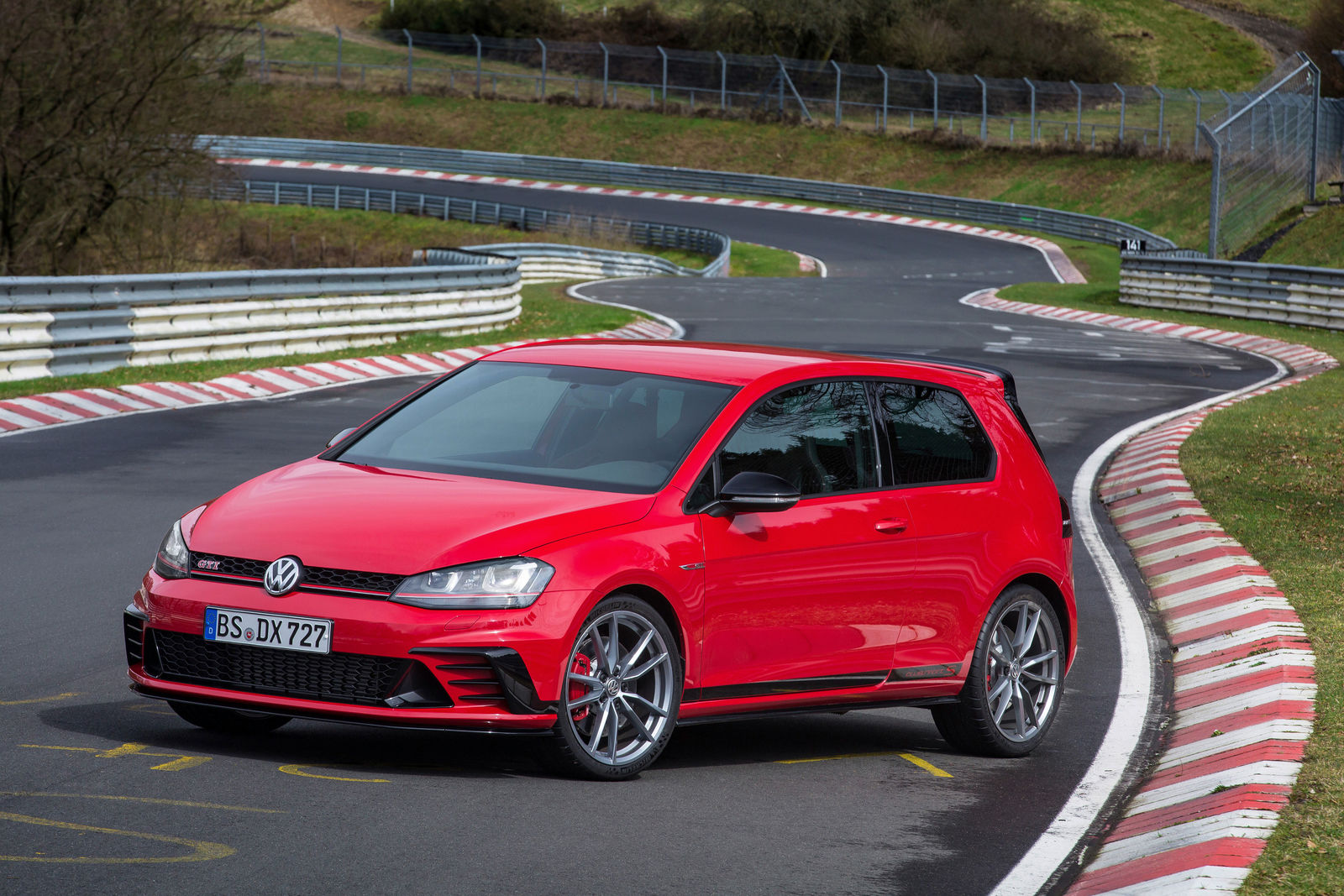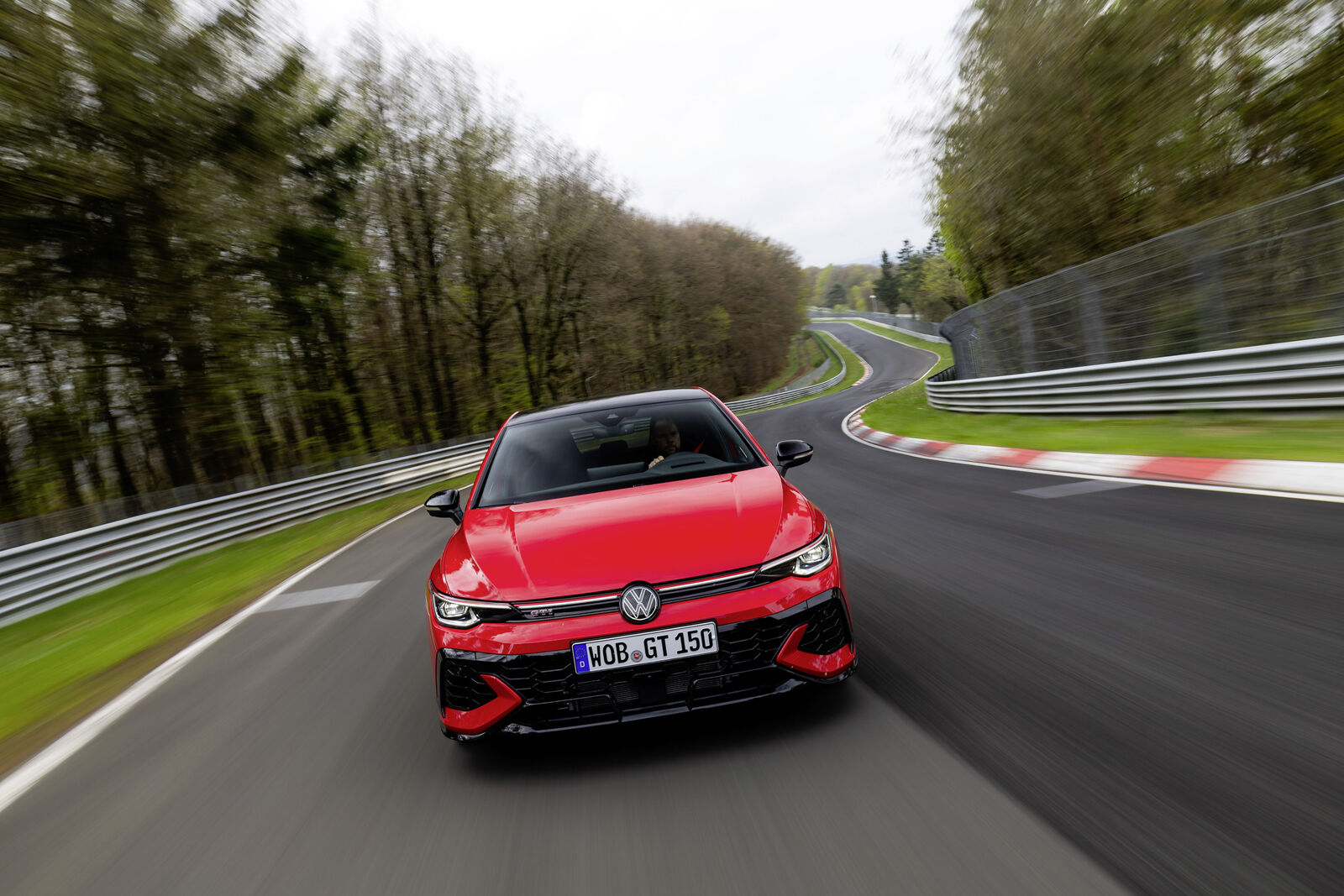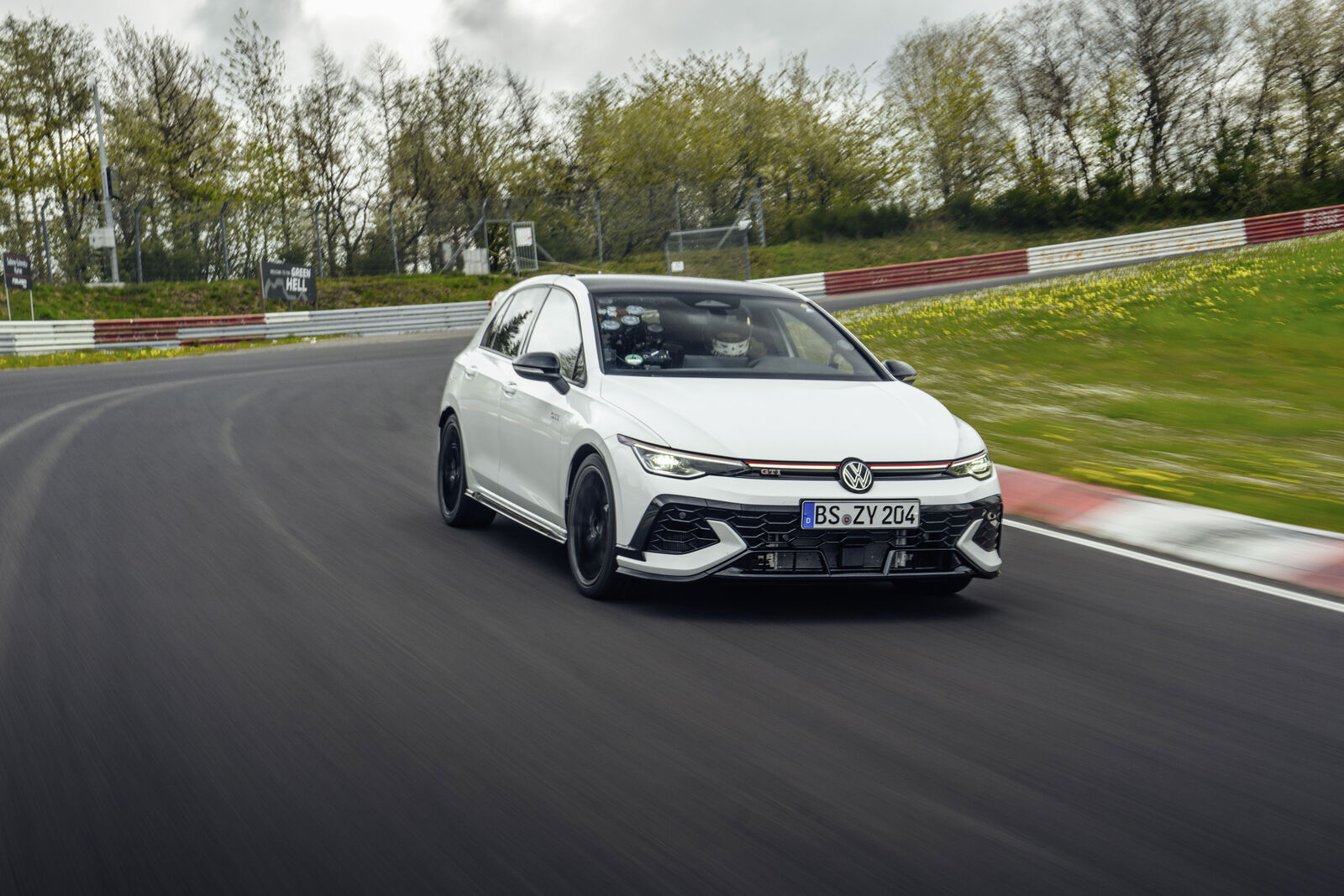New Golf GTI Clubsport S limited to just 400 units
Most powerful GTI ever smashes the Nürburgring lap record
The Golf GTI Clubsport S breaks the lap record for front-wheel-drive cars on the Nürburgring Nordschleife, with a time of 07:49:21
This exclusive GTI is a two-seater with a 310 PS engine and newly configured chassis
Ten key facts – the Golf GTI Clubsport S in keywords 1. The most powerful Golf GTI ever breaks the lap record for front-wheel-drive production cars on the Nürburgring Nordschleife, with a time of 07:49:21. 2. Only 400 of the limited edition Golf GTI Clubsport S, which delivers 228 kW/310 PS and can go from 0-100 km/h in just 5.8 seconds, will be made. 3. Uniquely, the Golf GTI Clubsport S has a Nürburgring setting, which can be accessed using the driving profile selector. 4. The Nürburgring setting finetunes the adaptive chassis control DCC, engine, steering and sound to suit the Nordschleife. 5. The chassis of the Golf GTI Clubsport S was fine-tuned in extensive racetrack tests and completely reconfigured. 6. With the EU unladen weight reduced to 1,285 kg, the 310 PS results in a sports car weight-to-power ratio of 4.15 kg/PS. (EU unladen weight incl. driver and luggage: 1,360 kg). 7. New exhaust system sees tail pipes with an enlarged cross-section produce strong backfire when braking. 8. The Golf GTI Clubsport S is a two-door, two-seat car, with the rear seats removed to save weight. 9. The Golf GTI Clubsport S comes with 19-inch alloy wheels ("Pretoria") and semi-slicks. 10. The production number 001/400 to 400/400 in the interior reveals that the car is an exclusive special edition.
Notes: TDI, TSI and DSG are registered trademarks of Volkswagen AG or other companies of the Volkswagen Group in Germany and in other countries. Features and technical data of production models apply to models offered in Germany. Details for other countries may vary.







